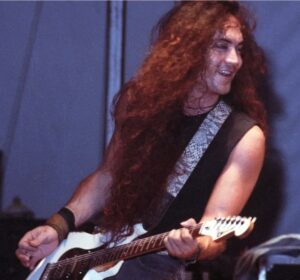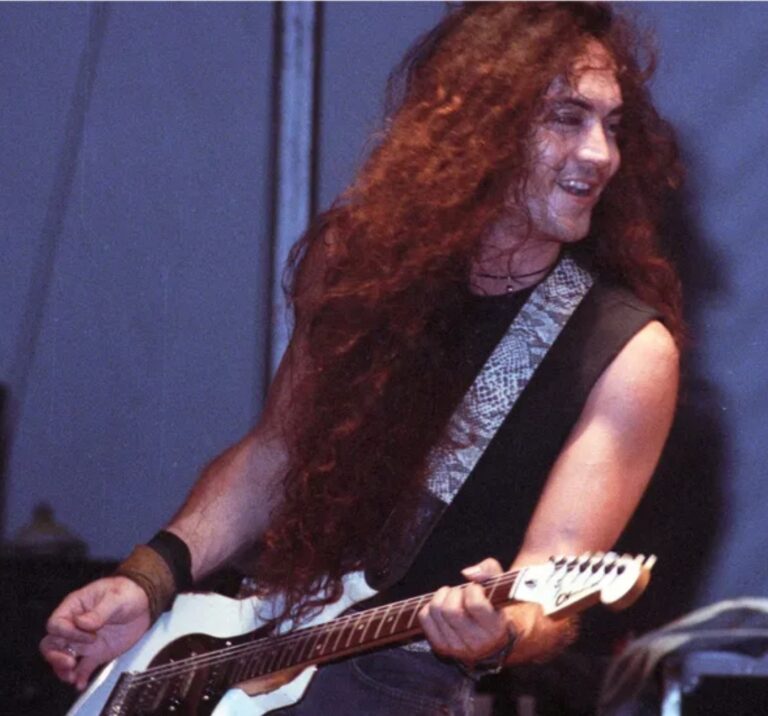Jake E. Lee, the guitar virtuoso behind Ozzy Osbourne’s iconic Bark at the Moon (1983) and The Ultimate Sin (1986), has never been shy about his true musical love: the 1989 self-titled debut from his band Badlands. In a recent Guitar World interview, Lee called the album his “finest hour,” a raw, blues-soaked masterpiece that he believes stands as his proudest work. “I thought it was perfect,” he said. “I didn’t know if it would sell, but I knew it was something I’d be proud of for the rest of my life.”
Badlands, featuring Lee alongside powerhouse vocalist Ray Gillen, drummer Eric Singer, and bassist Greg Chaisson, wasn’t just a band—it was a rebellion against the constraints Lee felt in his final days with Osbourne. “Ozzy would say, ‘No. This isn’t Frank Zappa, this is Ozzy Osbourne. Go back and write me something else,’” Lee recalled, chuckling at the memory. That pushback fueled his desire for creative control, and Badlands became his outlet. “I was getting a little frustrated,” he admitted. “With Badlands, I could do whatever I wanted.”
What Lee wanted was a sharp left turn from the Hollywood hair-metal scene dominating the late ’80s. While glam and hard rock ruled the airwaves, Lee and Gillen bonded over a shared love for the blues, channeling influences far removed from the era’s spandex-clad excess. The result was Badlands, a record brimming with soulful riffs, gritty vocals, and a swagger that dared to defy commercial trends. “At that point in time, I was getting really into the blues,” Lee explained. “Ray wanted to do the same thing. We just did whatever we wanted, and it ended up being more of a blues-rock band.”
The album’s cult following agrees. Fans and critics alike still champion Badlands for its raw energy and authenticity, a diamond in the rough during an era when blues-rock was overshadowed by the likes of Stevie Ray Vaughan or Eric Clapton. Tracks like “High Wire” and “Dreams in the Dark” showcase Lee’s searing guitar work and Gillen’s commanding vocals, underpinned by Singer and Chaisson’s rock-solid rhythm section. It’s a record that oozes confidence, what Lee calls “six-string-driven machismo.”
That confidence stemmed from Lee’s relentless drive to evolve as a player. “I don’t think a player ever really gets to the point where they think, ‘Oh, this is it. I’m it. This is me. I don’t need to go any further,’” he said. “You always think you can be a little better.” That hunger pushed him to craft an album that was less about chasing radio hits and more about capturing a moment of pure artistic freedom.
Yet, the music industry wasn’t ready for Badlands’ bold departure from the mainstream. While the album earned critical praise, it didn’t achieve the commercial success of Lee’s Osbourne-era work, a fact he shrugs off. “The industry didn’t want you to hear it,” he quipped, noting the era’s preference for polished metal over gritty blues-rock. Still, the album’s enduring fanbase proves its timeless appeal, with devotees on platforms like X hailing it as a “lost classic” that deserves rediscovery.
Lee’s reflections come at a reflective time. After surviving a near-fatal shooting in 2024 and reconciling with Osbourne for 2025’s Back to the Beginning shows, he’s in a contemplative mood, looking back on his legacy with pride. Badlands, he insists, remains the pinnacle—not just for its music, but for what it represented: a guitarist breaking free to play exactly what his soul demanded.
As Badlands approaches its 36th anniversary, Lee’s passion for the album is reigniting interest. Could a reissue or tribute tour be in the works? For now, Lee’s just happy to keep the flame alive, reminding fans why this overlooked gem still burns bright.
